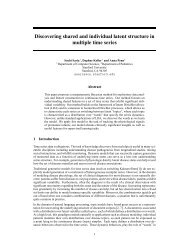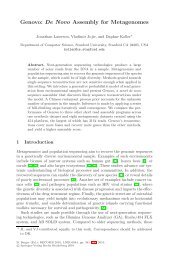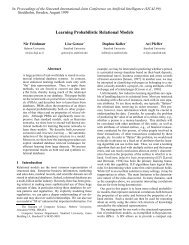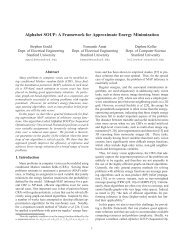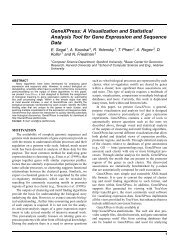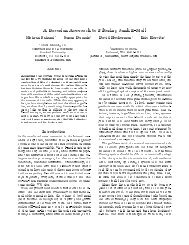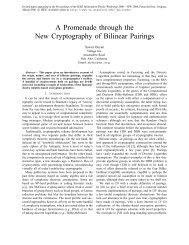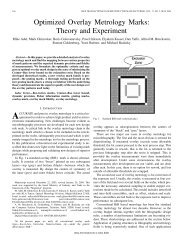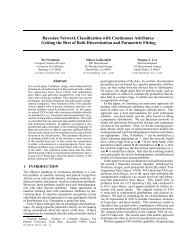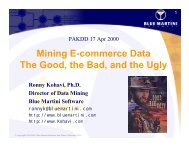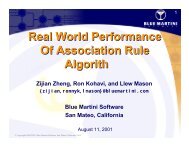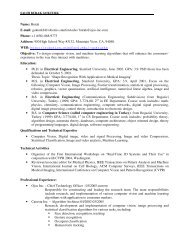Compile-time Loop Splitting for Distributed Memory ... - Stanford AI Lab
Compile-time Loop Splitting for Distributed Memory ... - Stanford AI Lab
Compile-time Loop Splitting for Distributed Memory ... - Stanford AI Lab
Create successful ePaper yourself
Turn your PDF publications into a flip-book with our unique Google optimized e-Paper software.
size leads to a decrease in calculation so that 20 iterations is the optimal interval size.<br />
If, instead, a compiler were to simplify only the modulo function, the largest loop<br />
splitting interval would be 30. The third code sequence of Table 3.6 shows the resulting<br />
code after strength reduction, where the modulo function has been replaced with addition<br />
by one.<br />
In order to optimize both expressions with loop splitting, the loop splitting interval in<br />
the example must be yet a different length. Upon inspection of the original code, one can<br />
see the largest interval length is 10 iterations. The bottom left code sequence of Table 3.6<br />
depicts this fully optimized case.<br />
In general, in order to per<strong>for</strong>m code hoisting on all divisions and strength reduction<br />
on all modulos in a loop, the loop splitting interval must be a common divisor of all the<br />
divisors and modulo bases, thereby guaranteeing the requirements of code hoisting and<br />
strength reduction. Of course, the greatest common divisor (gcd) would remove the most<br />
computation. The bottom right of Table 3.6 illustrates this.<br />
Be<strong>for</strong>e continuing this section, it is helpful to realize the consequences of the loop<br />
splitting interval length. The second and third code sequences of Table 3.6 are optimally<br />
split <strong>for</strong> the division and modulo expressions, respectively, because they minimize the<br />
number of calculations <strong>for</strong> each. However, to allow optimization of both expressions, the<br />
fourth code sequence re-introduces redundant computations. Here, ten divisions and<br />
modulos are per<strong>for</strong>med though the minimum computations are five divisions and three<br />
modulos.<br />
The additional five divisions and seven modulos represent the trade-offs associated<br />
with choosing which expressions to optimize. In the best case, all expressions to be<br />
optimized lead to the same loop splitting interval length, and all are optimized to the<br />
minimal computation needed. However, in the worst case, they lead to a greatest common<br />
divisor of 1, where the resulting code is “fully optimized” but per<strong>for</strong>ms the same number of<br />
divisions and modulos as the original code. Indeed, this extreme case is actually worse<br />
than the original code due to the extra loop overhead of the outer loop! Deciding the<br />
interval length and which expressions to optimize leads to different loop splitting methods,<br />
of which two are presented in Section 4.<br />
34




